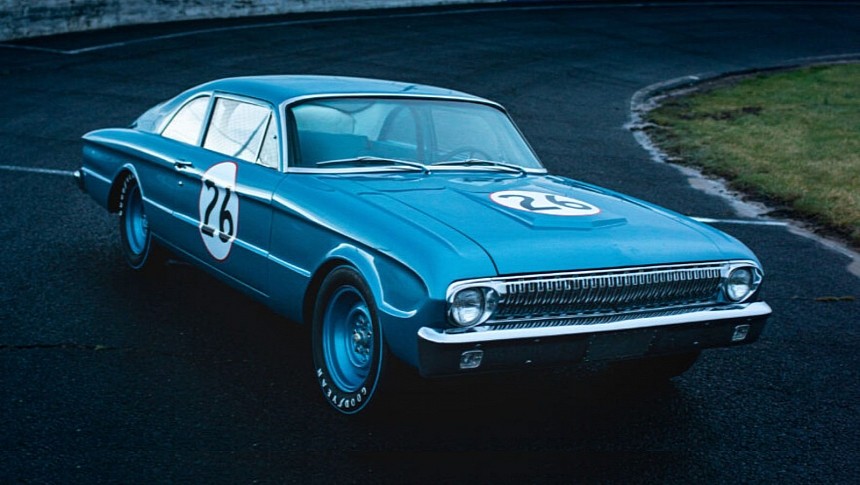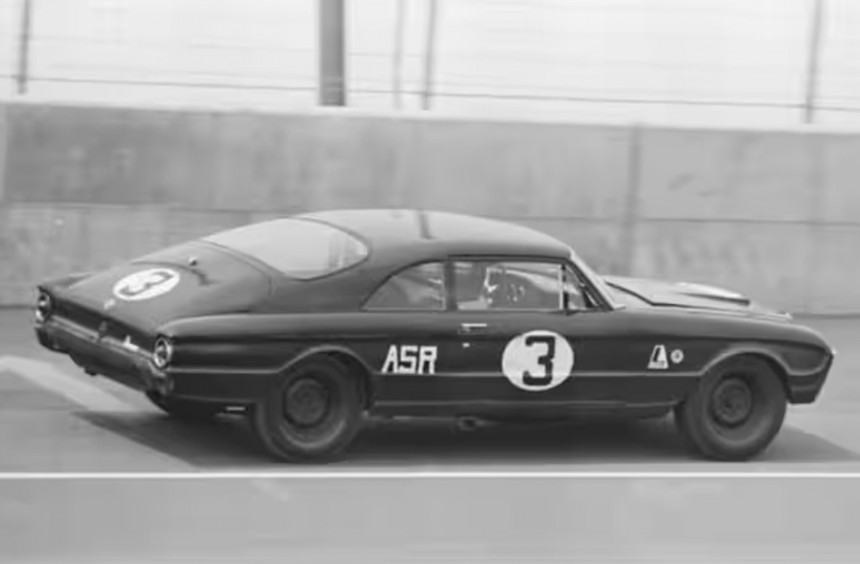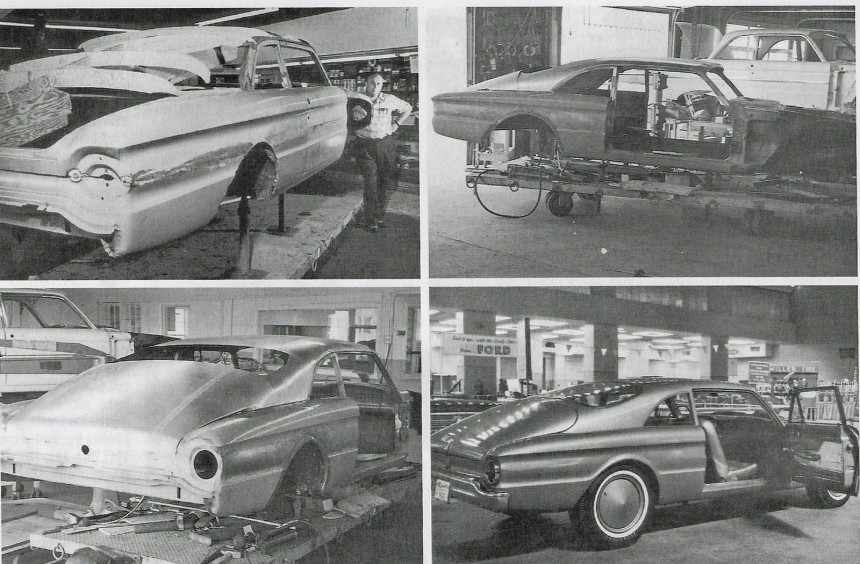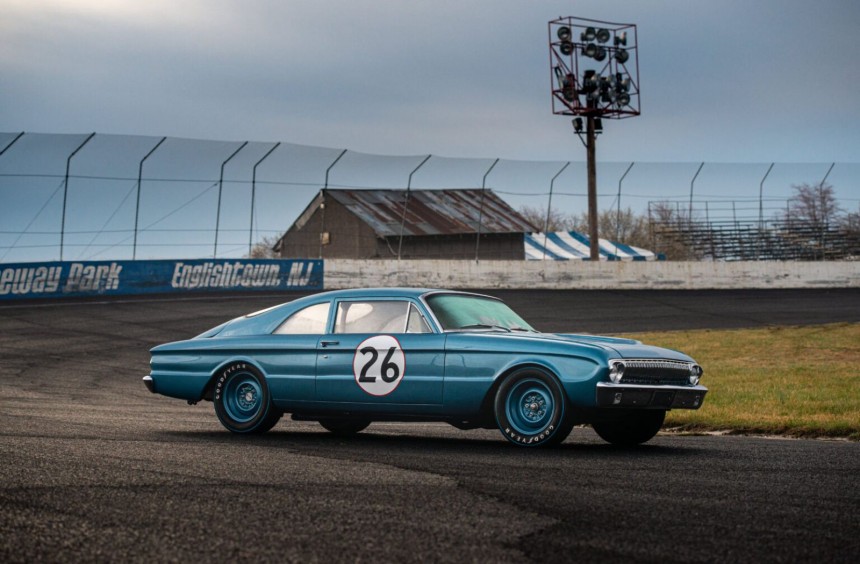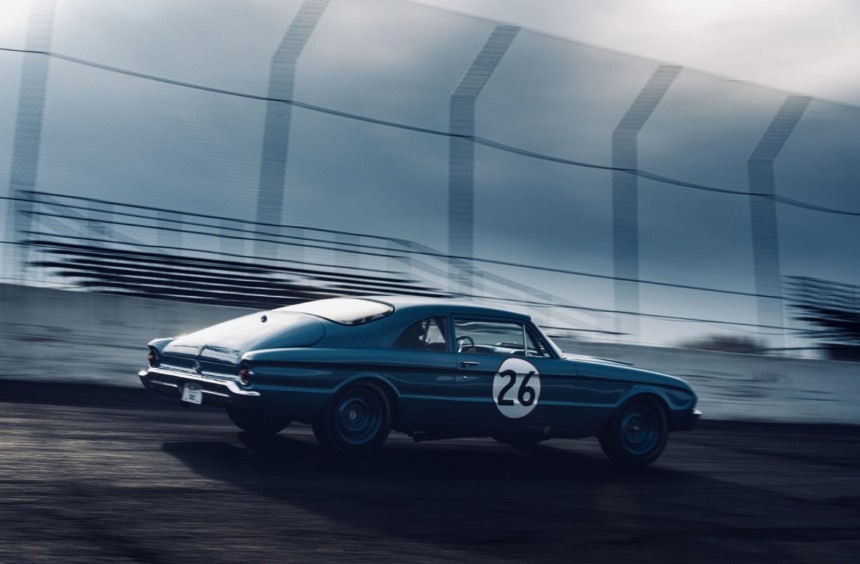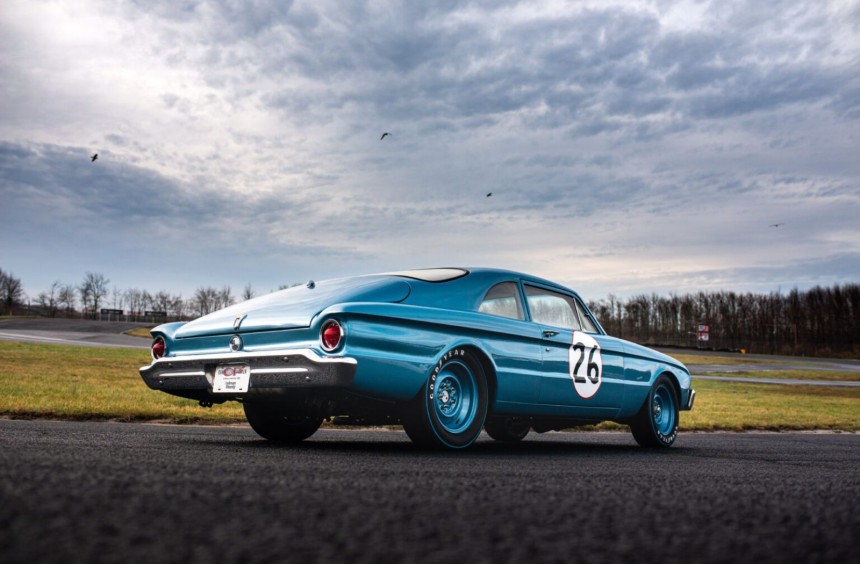About two years before the Mk I GT40 debuted at Nürburgring, another race-prepped Ford based on the compact Falcon went up against Ferrari icons like the 250 GTO, 250 TR, or 250 GT SWB in The Bahamas.
By now, every motorsport enthusiast knows the story behind the Blue Oval's triumph at Le Mans, thanks to the 2019 Holywood blockbuster Ford v Ferrari.
After failing to take over the Italian brand, the American corporation brought a Lola Mk 6 chassis and transformed it into a Ferrari-slaying monster.
The resulting endurance prototype initially failed to dethrone the Scuderia. But, with the help of engineering legends Carroll Shelby and John Wyer, the GT40 managed to top Ferrari at Le Mans - the world's most legendary race - winning it on four consecutive occasions from 1966 to 1969.
However, the GT40 was not the first grand touring prototype that raced against Ferrari during the 1960s.
After taking a break from racing, the American carmaker decided to get back at it in an official capacity during the early-1960s.
The company wanted to return in full force, with plans to quickly dominate NASCAR, the Indianapolis 500, or the increasingly-popular Grand Touring racing scene.
However, for the latter category, the Blue Oval lacked a suitable car, so in 1962, it contracted stock-car guru John Holman and his Holman-Moody team to create one out of an unlikely mass-produced Ford.
As the American automotive industry was forced to tone down the land yacht formula by the arrival of smaller imports in the post-WWII years, Ford introduced the compact Falcon for the 1960 model year.
Available in all conceivable variations, from two-door coupe to four-door wagon, and powered by a standard six-cylinder Mileage Maker conceived with fuel economy in mind, the Falcon became a resounding success.
As you can imagine, when Ford chose the mundane compact as the base for a road-racing grand tourer, even John Holman scratched his head.
Nevertheless, he wasn't the kind of person to back down from a challenge, and, using the two-door chassis as the base for the project, his team transformed not one but three Falcons into capable grand tourers.
The first, finished in just ten days, had its body drastically altered. Three inches (76 cm) were chopped off both the lower section and the greenhouse, while an aluminum fastback roofline was added for improved aerodynamics.
Unlike the mass-produced Falcon (which would receive one about a year later), the modified car was powered by a Ford's brand-new Challenger V8 borrowed from the Fairlane. Holman-Moody chose the 221-ci (3.6 liters) instead of the larger 260 4.3-liter (the official Challenger) and transformed it into a 230-hp 244-ci (3.99 liters) race engine - just below FIA's 4.0-liter limit for similar grand touring prototypes.
The car dubbed Challenger I debuted at the 1962 12 Hours of Sebring but only finished 36th overall because a lubrication system issue forced the team to replace the cylinder heads mid-race.
The second car was a road-going version meant to research the feasibility of producing a premium GT-style Falcon. It featured a fully-trimmed interior, a stiffened suspension system, disc brakes behind all four wheels, and a stock 260 Challenger V8.
The third Falcon Challenger was the final evolution that combined features from the previous two. It was conceived as a road-legal race car (similar to Ferrari's 250 GTO series) with plans to produce 100 units to gain homologation for FIA and ACO (the Le Mans organizers) races.
On the outside, it featured the same extensive modifications as its siblings. Inside, it retained the Challenger II's leather-clad front seats or color-matching carpeting, but the backseat was removed to make room for dual fuel tanks, and it also gained a full roll cage.
Mechanically, the Challenger III was equipped with stiffer springs, competition shocks, a bespoke rear sway bar, a beefy 9-inch rear axle, and disc brakes all around.
The initial 244 race unit was dropped in favor of Ford's newest 289-ci (4.7 liters) Challenger, which was also heavily improved by the Holman-Moody team.
The Challenger III was finished in November 1962, just in time for the International Bahamas Speed Week held in December.
Co-driven by Marvin Panch and Jocko Maggiacomo, the Falcon-turned-GT went up against 250 GTO, 250 TR, or 250 GT SWB Ferraris, finishing first in class and fifth overall in the Preliminary Nassau Tourist Trophy. It also earned third place in its class in the Preliminary Governor's Trophy, but in the main 252-mile (405.5 km) Nassau Trophy Race, a broken fan belt forced it to retire.
The car was scheduled to compete in the 12 Hours of Sebring race in March 1963, and a run at Le Mans was also under consideration. However, shortly after the Bahamas Speed Week concluded, Ford decided to pull the plug on the project and focus its efforts on the upcoming GT40.
Ford enthusiasts and the automotive press hoped the company would at least consider producing the Challenger II, but that never happened. Instead, the Mustang joined Ford's lineup and eventually received the fastback, GT-style treatment.
The trio of Holman-Moody-prepped Falcon Challengers was saved from the crusher by Ford engineer Bill Clawson, who reportedly had to pay $1 for all three on the condition that he would occasionally lend the Challenger III back to Ford for promotional events.
The car appeared at numerous events through 1965, often alongside one-offs like the short-wheelbase Mustang II "Shorty."
After it was retired from promotional duties, the Challenger III (and the Challenger I) competed in various amateur competitions, as Clawson and his son were both amateur race drivers.
The Clawsons eventually stripped and scrapped the Challenger I's warn-out chassis but kept the powertrain. The Challenger II was also dismantled and locked up in a storage unit, but unfortunately, the chassis was later stolen.
However, the Challenger III survived more or less unscathed. The Clawsons sold it in 1984, but the new owner didn't keep the car for long and sold it again to renowned collector and driver Ted Thomas.
In 2021, the Challenger III was reunited with its former tour buddy, the Mustang II "Shorty," in Howard Kroplick's collection. The new (and current owner) sent it to classic race car restoration expert Rob Ida in Morganville, New Jersey, where the fantastic car was brought back to its original condition.
Although it never got to compete against Ferrari GTs at Le Mans, the Falcon Challenger III, and the entire Holman-Moody project are a fascinating part of Ford's motorsport history that deserve to be remembered.
After failing to take over the Italian brand, the American corporation brought a Lola Mk 6 chassis and transformed it into a Ferrari-slaying monster.
The resulting endurance prototype initially failed to dethrone the Scuderia. But, with the help of engineering legends Carroll Shelby and John Wyer, the GT40 managed to top Ferrari at Le Mans - the world's most legendary race - winning it on four consecutive occasions from 1966 to 1969.
However, the GT40 was not the first grand touring prototype that raced against Ferrari during the 1960s.
Reviving Ford's motorsport involvement
The company wanted to return in full force, with plans to quickly dominate NASCAR, the Indianapolis 500, or the increasingly-popular Grand Touring racing scene.
However, for the latter category, the Blue Oval lacked a suitable car, so in 1962, it contracted stock-car guru John Holman and his Holman-Moody team to create one out of an unlikely mass-produced Ford.
As the American automotive industry was forced to tone down the land yacht formula by the arrival of smaller imports in the post-WWII years, Ford introduced the compact Falcon for the 1960 model year.
Available in all conceivable variations, from two-door coupe to four-door wagon, and powered by a standard six-cylinder Mileage Maker conceived with fuel economy in mind, the Falcon became a resounding success.
Converting the Falcon from an ordinary people-mover to a grand tourer
Nevertheless, he wasn't the kind of person to back down from a challenge, and, using the two-door chassis as the base for the project, his team transformed not one but three Falcons into capable grand tourers.
The first, finished in just ten days, had its body drastically altered. Three inches (76 cm) were chopped off both the lower section and the greenhouse, while an aluminum fastback roofline was added for improved aerodynamics.
Unlike the mass-produced Falcon (which would receive one about a year later), the modified car was powered by a Ford's brand-new Challenger V8 borrowed from the Fairlane. Holman-Moody chose the 221-ci (3.6 liters) instead of the larger 260 4.3-liter (the official Challenger) and transformed it into a 230-hp 244-ci (3.99 liters) race engine - just below FIA's 4.0-liter limit for similar grand touring prototypes.
The car dubbed Challenger I debuted at the 1962 12 Hours of Sebring but only finished 36th overall because a lubrication system issue forced the team to replace the cylinder heads mid-race.
The second car was a road-going version meant to research the feasibility of producing a premium GT-style Falcon. It featured a fully-trimmed interior, a stiffened suspension system, disc brakes behind all four wheels, and a stock 260 Challenger V8.
The Challenger III
On the outside, it featured the same extensive modifications as its siblings. Inside, it retained the Challenger II's leather-clad front seats or color-matching carpeting, but the backseat was removed to make room for dual fuel tanks, and it also gained a full roll cage.
Mechanically, the Challenger III was equipped with stiffer springs, competition shocks, a bespoke rear sway bar, a beefy 9-inch rear axle, and disc brakes all around.
The initial 244 race unit was dropped in favor of Ford's newest 289-ci (4.7 liters) Challenger, which was also heavily improved by the Holman-Moody team.
A short-lived racing career
Co-driven by Marvin Panch and Jocko Maggiacomo, the Falcon-turned-GT went up against 250 GTO, 250 TR, or 250 GT SWB Ferraris, finishing first in class and fifth overall in the Preliminary Nassau Tourist Trophy. It also earned third place in its class in the Preliminary Governor's Trophy, but in the main 252-mile (405.5 km) Nassau Trophy Race, a broken fan belt forced it to retire.
The car was scheduled to compete in the 12 Hours of Sebring race in March 1963, and a run at Le Mans was also under consideration. However, shortly after the Bahamas Speed Week concluded, Ford decided to pull the plug on the project and focus its efforts on the upcoming GT40.
It's still around today
The trio of Holman-Moody-prepped Falcon Challengers was saved from the crusher by Ford engineer Bill Clawson, who reportedly had to pay $1 for all three on the condition that he would occasionally lend the Challenger III back to Ford for promotional events.
The car appeared at numerous events through 1965, often alongside one-offs like the short-wheelbase Mustang II "Shorty."
After it was retired from promotional duties, the Challenger III (and the Challenger I) competed in various amateur competitions, as Clawson and his son were both amateur race drivers.
The Clawsons eventually stripped and scrapped the Challenger I's warn-out chassis but kept the powertrain. The Challenger II was also dismantled and locked up in a storage unit, but unfortunately, the chassis was later stolen.
However, the Challenger III survived more or less unscathed. The Clawsons sold it in 1984, but the new owner didn't keep the car for long and sold it again to renowned collector and driver Ted Thomas.
In 2021, the Challenger III was reunited with its former tour buddy, the Mustang II "Shorty," in Howard Kroplick's collection. The new (and current owner) sent it to classic race car restoration expert Rob Ida in Morganville, New Jersey, where the fantastic car was brought back to its original condition.
Although it never got to compete against Ferrari GTs at Le Mans, the Falcon Challenger III, and the entire Holman-Moody project are a fascinating part of Ford's motorsport history that deserve to be remembered.
